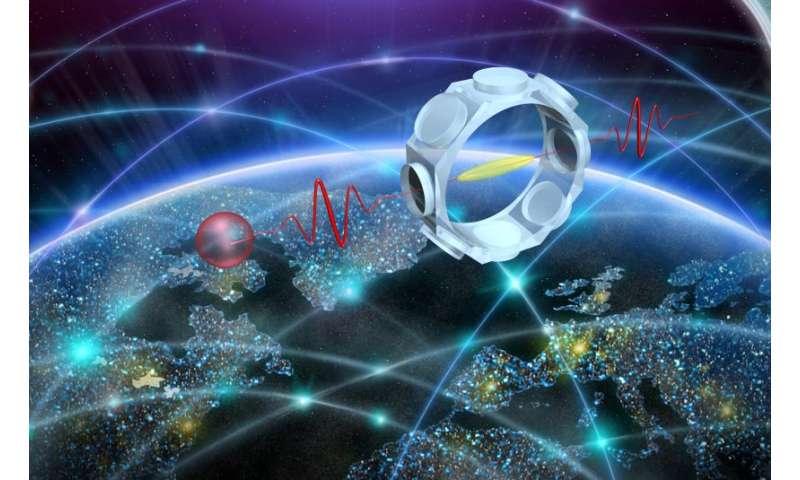Quantum Memory -- A record high efficiency for secure storage

Researchers at Laboratoire Kastler Brossel in Paris have broken a key barrier in the performances of quantum memories. Their work enables the first secure storage and retrieval of quantum bits.
The ability to store quantum information in memories is an essential step for future quantum networks. These memories enable the synchronization of quantum bits, with applications to long-distance quantum communication protocols or computing algorithms. In the recent years, these devices have been implemented in a variety of platforms, which enable the control of the interaction between the information carrier, usually a photon, and a physical medium for storage. However, no memory had been able so far to store and retrieve a qubit at a success rate over 30%. Such a limited efficiency reduces the performance of memory-based quantum devices, but especially because it is less than 50%, it prevented any proof of the privacy of the stored information, or the security of the implemented protocols. Indeed, because in that case more energy is lost than retrieved, it cannot be guaranteed that an eavesdropper has not obtained a better copy of the retrieved information.
In the January 25th online issue of Nature Communications, Prof. Julien Laurat and his team at Sorbonne Université in Paris (Laboratoire Kastler Brossel, LKB) report that they have broken this key limit and have stored optical qubits with a record efficiency of 70%, while preserving a fidelity to the input qubit beyond 99%.
"In this work we gathered several key ingredients in a single setup and we achieved the highest efficiency to date for the storage and readout of an optical qubit," says Pierre Vernaz-Gris, a former doctoral student who performed the experiment and one of the two lead authors of the paper.
The experiment involves the conversion of a photonic qubit into an atomic excitation of laser-cooled cesium atoms. With the protocol of electromagnetically-induced transparency, a control laser beam makes the medium transparent and slows down the impinging signal light carrying the information. When the signal is contained within the ensemble and the control beam is turned off, the information is converted into a collective excitation of the atoms, which is stored until the control beams is turned on again. This technique mastered at LKB already enabled several realizations in the previous years, but the efficiency of the process greatly depends on the number of atoms involved in the interaction. The researchers at LKB have therefore prepared a very elongated – almost three-centimeter-long – cloud of ultracold atoms, which enabled efficient storage. However, such compression of the ensemble usually makes the qubit storage difficult, as it requires for example the spatial multiplexing of the cloud. In their work, the efficient storage and spatial multiplexing are concurrently obtained, and importantly with a high signal-to-noise ratio.
"The achieved efficiency can boost quantum network scalability and it also paves the way to advanced tasks where the efficiency plays a critical role, such as in certification protocols or unforgeable quantum money," comments Dr. Kun Huang, a postdoctoral fellow and a lead author of the study. "This device can now be at the heart of many challenging investigations for quantum networks."
This demonstration follows other works that Laurat's group has done in recent years, including the realization of a multiple-degree-of-freedom quantum memory or the initial demonstration of stopped light in an optical fiber.
More information:
Highly-efficient quantum memory for polarization qubits in a spatially-multiplexed cold atomic ensemble, Nature Communications 9, 363 (2018) doi.org/10.1038/s41467-017-02775-8
Provided by Universite P. et M. Curie